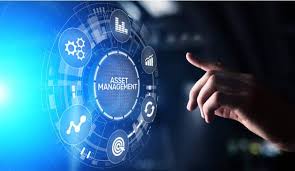Asset management software is used for a range of different objectives. It also helps your business to easily access the necessary information on asset management. However, we will be talking about digital, enterprise, and free asset management software, including those for IT.
Asset Management Software
This is a centralized solution that thus enables your business to monitor critical asset information quickly. This minimizes administrative costs, improves service, and also gives your organization greater visibility into equipment consumption, pricing, and maintenance. It can still be useful to track a wide number of different types of assets; also it enables you to manage both physical and virtual assets.
Digital Asset Management Software
A digital asset is an image, audio file, presentation, video, or other branded material or media that has language rights or licensing requirements. These files may be in a variety of formats, such as PNGs and JPGs for photographs, WAVs and BWFs for audio, PSDs, and TIFFs for design files, PDFs and Word documents, and others.
However, digital Asset Management software automates the management of photographs and other non-textual resources. Users can also use digital asset management (DAM) software to create, assess, approve, store, and use branded content all from one location. However, the goal of the digital asset management (DAM) system is to organize the workflow and lifecycle of a company’s digital assets, which include videos, photographs, audio files, design files, and presentations. As a result, it’s widely useful as a brand management tool to ensure that internal teams adhere to brand guidelines and maintain brand consistency. Many programs can be tailored to add capabilities such as process automation, usage tracking, and connections with other applications such as content management systems.
Benefits of a Digital Asset Management System
These benefits of features cover both the internal and the external businesses. They are as follows.
- Locate digital assets fast and easily with little to no training.
- Configure the asset management system according to your specifications.
- Collaboration on all asset-related matters, and also it should take place on a single platform.
- Prevent the duplicating of digital content.
- Ascertain that none of your digital assets are ever underutilized.
- Anyone may view and share files at any time, from any location, and also on any device.
- You may also develop and collaborate on digital documents in one location.
- Distribute company content easily across several digital platforms, including content management systems, social media, and more.
- Consistently project a brand image.
- Set the expiration dates for licensing assets.
- Recognize repurposing opportunities for digital materials.
- Analyze the performance of assets, their location, and also who is using them.
What Does a Digital Asset Management Platform Do?
With digital assets, DAM software however improves seven key components of a company’s increased performance: creation, organization, collaboration, distribution, storage, and performance monitoring.
Who Uses Digital Asset Management?
There are two types of DAM users: Internal and external. Below are a few example use cases:
Internal Users
- Creatives
- Sales & Marketing
- IT & Legal
External Users
- Agencies
- Contractors & Partners
Asset Management Software For IT
IT asset management is a wide phrase that refers to a computer system that moreover tracks the assets of an organization. On the other hand, the International Association of IT Asset Managers (IAITAM) defines IT asset management as “a collection of business processes that consolidates IT assets throughout the organization’s business units.”
In an information technology ecosystem, the process assists in strategic decision-making.
The purpose of an IT asset management solution is to:
- Assist in the efficient management of the organization’s assets.
- Visibility of assets should be enhanced.
- Ascertain that assets are in use to their utmost capacity.
- IT and software costs should be lowered.
- Ascertain that all regulatory requirements are met.
How To Select The Best IT Asset Management Software?
You may find a selection of asset management software on the internet. Asset management software is also classified by the asset types it supports in managing
Infrastructure Asset Management Software: This program is used to manage physical infrastructure assets such as roads, utilities, power generators, and transportation equipment. They are frequently used by government bodies and multinational enterprises.
Financial Asset Management Software: This software is however used to manage the financial assets of a business. Among the assets are investment funds, securities, loans, and other financial instruments.
Software Asset Management: This tool is also used to maintain track of a company’s software applications’ purchase, use, update, license renewal, and other elements.
Physical Asset Management: This asset is thus used to manage all of a business’s physical assets. Examples include computer hardware, lighting fixtures, tables, cabinets, and other physical assets.
Every corporation needs to keep track of its corporate assets.
Free Asset Management Software
There is free asset management software that is listed out for your use. Below are them.
#1. Nlyte Data Center Infrastructure Management (DCIM)
This enables organizations to plan, manage, and automate the whole infrastructure lifecycle, including data centers and hybrid cloud resources. However, managers can estimate the capacity impact of data center activities on space, electricity, cooling, and networks by evaluating what-if scenarios.
#2. Booqable
In free asset management, this is the first cloud-based rental software that streamlines the renting process and simply integrates with your website. It also collaborates with businesses that rent bicycles, cameras, party equipment, wedding and event decor, tools, outdoor and camping equipment, skis, kayaks, and surfboards, among other things. Booqable thus offers a complete solution for rental stores to manage and grow their business online and in-store, with a simple user interface, excellent support, and a powerful feature set.
#3. Asset Infinity
This is a cloud-based free asset management software package. The product is also available on the web and on mobile. The asset tracking and management module include location, department, and employee tracking, documentation at check-in and check-out, asset movement history, asset tagging via barcode/QR-based labels, NFC, RFID, and BLE beacons, and asset discarding at end of life.
#4. Canfigure
This is a modular solution with capabilities like CMDB, Asset Management, Service Management, Change Management, and more. You can also select which modules you require and customize them to your exact requirements. Canfigure contains all of the tools required to modify the database and user interface with minimal vendor involvement. Canfigure can still be deployed on your network or we can manage it for you on the Amazon cloud.
#5. Freshservice
It is a cloud-based IT Help Desk and service management tool that assists enterprises with streamlining their IT operations. Among the features included in the solution are a ticketing system, a self-service site, and a knowledge base. IT administrators can also handle requests remotely via the solution’s mobile app, which is available for iOS and Android. Freshservice thus provides ITIL-compliant components to aid administrators in the management of assets, incidents, problems, changes, and releases.
#6. Jira Service Management
Jira Service Management, formerly known as Jira Service Desk, is a high-speed IT service management solution. IT is experiencing significant transformation in order to develop skills that enable the rapid delivery of good services while balancing cost and risk. However, antiquated operational approaches inhibit advancement. Rigid processes impede team agility. Disparate, disconnected tools block the flow of information and make educated decisions harder.
Enterprise Asset Management Software
Users can track assets throughout their entire lives, from installation to disposal, with enterprise asset management (EAM) software. EAM is particularly helpful to large enterprises that handle a varied range of assets since it provides extensive capabilities for controlling expenses, enhancing performance, and managing asset resources. Asset management software goes a step further with Enterprise asset management software, which encompasses maintenance as well as other business operations including procurement, inventory management, and field service management. Large organizations searching for software to aid them to manage a varied range of assets and also manage multiple business processes can explore EAM software.
Enterprise Asset Management (EAM) Software Comparison
Keep the following considerations in mind when shopping for corporate asset management software:
- Integrations: How well does each solution interact with your company’s existing ERP, accounting, and facility management software? Check to see if each vendor provides connections for the firm’s existing software, as the complexity of such interfaces will have a big impact on how seamlessly asset management techniques are deployed across the organization.
- Vertical-Specific Support: Evaluate the likely changes for the industry in which the company operates. Many top manufacturers will provide pre-built industry-specific functionality, albeit not all of these features will be applicable to all industries. Some firms may benefit from a more generically adaptable platform rather than industry-specific features.
- On-Premise vs. Cloud-Based: While SaaS-based enterprise resource planning (EAM) software is growing more popular, on-premise choices continue to exist. On-premise is the best option for highly secure businesses that need a high level of technical control over their EAM software. Cloud-based goods, on the other hand, will be suitable for firms that do not want to deal with the IT issues associated with on-premise technology but still require a higher level of accessibility, including mobile apps.
Do I Need a Digital Asset Management?
Yes! Your organization is dealing with major difficulties that are affecting overall efficiency and productivity. Digital asset management (DAM) system can help you organize and archive digital assets including images, documents, creative files, audio, and video clips. However, digital asset management is important in your organization.
What Is Meant by Digital Asset Management?
Digital Asset Management software automates the management of photographs and other non-textual resources. Users can use digital asset management (DAM) software to create, assess, approve, store, and use branded content all from one location.
Does Microsoft Have a Digital Asset Management System?
Microsoft Office and Digital Asset Management Make it simple for employees to access digital assets by using Microsoft Office apps like Word, Excel, and PowerPoint. Make certain that the brand is consistent and committed to.
What Does Asset Management Software Do?
Asset management software is a central system that keeps track of important information about each asset in real time. This lowers administrative costs, improves service, and gives your organization more information about how assets are used, how much they cost, and how much they cost to maintain.
Do Asset Managers Use Excel?
Excel has been around for a long time. Because of this, it has become one of the traditional ways to manage assets. But now, there are a lot of options for managing assets that are made only for managing assets well.






